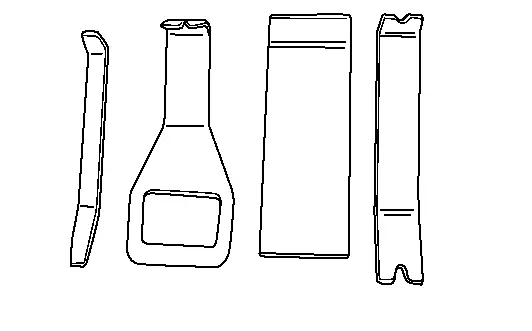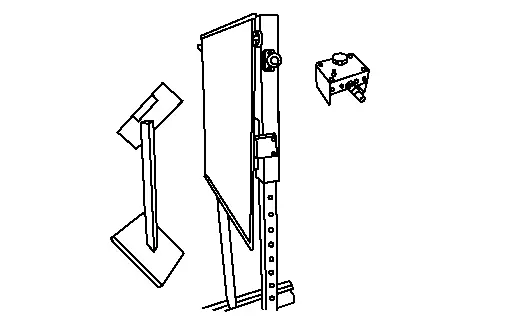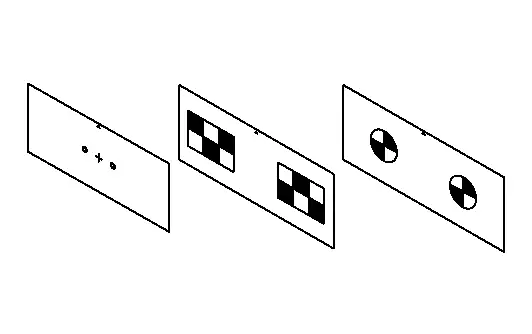Nissan Pathfinder: Driver Assistance System - Driver Assistance System
Precautions Nissan Pathfinder Fifth generation
Precaution for Supplemental Restraint System (SRS) "AIR BAG" and "SEAT BELT PRE-TENSIONER"
The Supplemental Restraint System such as “AIR BAG” and “SEAT BELT PRE-TENSIONER”, used along with a front seat belt, helps to reduce the risk or severity of injury to the driver and front passenger for certain types of collisions.
Information necessary to service the system safely is included in the “SRS AIR BAG” and “SEAT BELT” sections of this Service Manual.
WARNING:
Always observe the following items for preventing accidental activation:
-
To avoid rendering the SRS inoperative, which could increase the risk of personal injury or death in the event of a collision that would result in air bag inflation, it is recommended that all maintenance and repair be performed by an authorized NISSAN/INFINITI dealer.
-
Improper repair, including incorrect removal and installation of the SRS, can lead to personal injury caused by unintentional activation of the system. For removal of Spiral Cable and Air Bag Module, see “SRS AIR BAG”.
-
Never use electrical test equipment on any circuit related to the SRS unless instructed to in this Service Manual. SRS wiring harnesses can be identified by yellow and/or orange harnesses or harness connectors.
PRECAUTIONS WHEN USING POWER TOOLS (AIR OR ELECTRIC) AND HAMMERS
WARNING:
Always observe the following items for preventing accidental activation:
-
When working near the Air Bag Diagnosis Sensor Unit or other Air Bag System sensors with the ignition/power switch ON or engine running, never use air or electric power tools or strike near the sensor(s) with a hammer. Heavy vibration could activate the sensor(s) and deploy the air bag(s), possibly causing serious injury.
-
When using air or electric power tools or hammers, always switch the ignition/power switch OFF, disconnect the 12V battery or batteries, and wait at least 3 minutes before performing any service.
Precautions for Work
-
When removing or disassembling each component, be careful not to damage or deform it. If a component may be subject to interference, be sure to protect it with a shop cloth.
-
When removing (disengaging) components with a screwdriver or similar tool, be sure to wrap the component with a shop cloth or vinyl tape to protect it.
-
Protect the removed parts with a shop cloth and prevent them from being dropped.
-
Replace a deformed or damaged clip.
-
If a part is specified as a non-reusable part, always replace it with a new one.
-
Be sure to tighten bolts and nuts securely to the specified torque.
-
After installation is complete, be sure to check that each part works properly.
-
Follow the steps below to clean components:
-
Water soluble dirt:
-
Dip a soft cloth into lukewarm water, wring the water out of the cloth and wipe the dirty area.
-
Then rub with a soft, dry cloth.
-
-
Oily dirt:
-
Dip a soft cloth into lukewarm water with mild detergent (concentration: within 2 to 3%) and wipe the dirty area.
-
Then dip a cloth into fresh water, wring the water out of the cloth and wipe the detergent off.
-
Then rub with a soft, dry cloth.
-
-
Do not use organic solvent such as thinner, benzene, alcohol or gasoline.
-
For genuine leather seats, use a genuine leather seat cleaner.
-
Precautions For Harness Repair
ITS communication uses a twisted pair line. Be careful when repairing it.
-
Solder the repaired area and wrap tape around the soldered area.
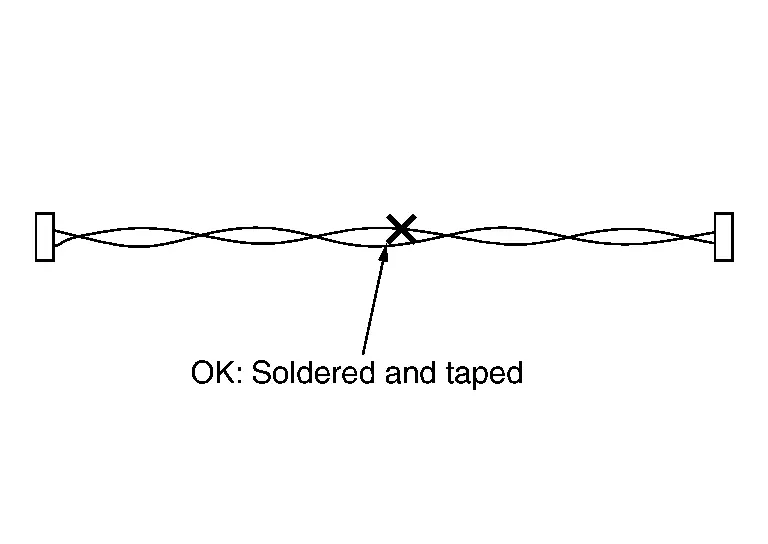
 NOTE:
NOTE:
A fray of twisted lines must be within 110 mm (4.33 in).
-
Bypass connection is never allowed at the repaired area.
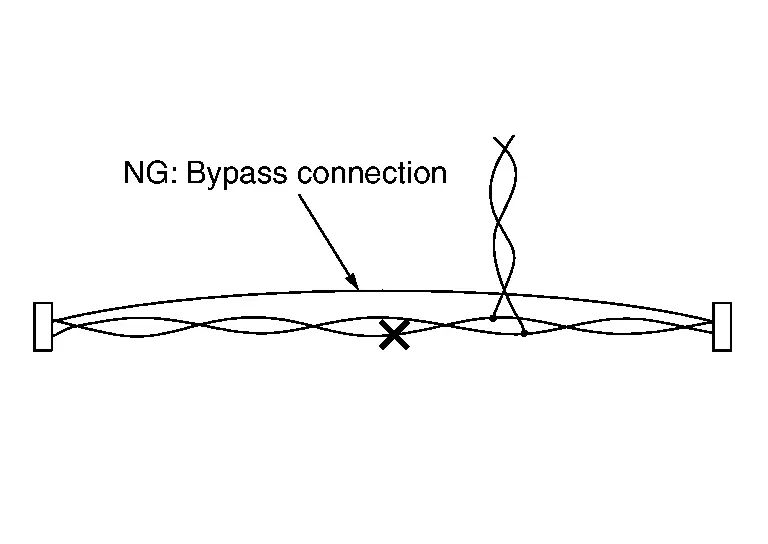
 NOTE:
NOTE:
Bypass connection may cause ITS communication error. The spliced wire becomes separated and the characteristics of twisted line are lost.
ICC System Service
CAUTION:
-
Turn MAIN switch OFF in conditions similar to driving, such as free rollers or a chassis dynamometer.
-
Do not use or disassemble distance sensor removed from the Nissan Pathfinder vehicle.
-
Erase DTC when replacing parts of ICC system, then check operation of ICC system after adjusting radar alignment, if necessary.
FCW/FCA System Service
CAUTION:
-
Turn FCW/FCA system OFF in conditions similar to driving, such as free rollers or a chassis dynamometer.
-
Do not use or disassemble distance sensor removed from the Nissan Pathfinder vehicle.
-
Erase DTC when replacing parts of ICC system, then check operation of ICC system after radar alignment, if necessary.
-
Do not change FCW/FCA initial state ON⇒OFF without consent of the customer.
Blind Spot Warning/Rear Cross Traffic Alert (RCTA) System Service
WARNING:
Be careful of traffic conditions and safety around the vehicle when performing road test.
CAUTION:
-
Do not use Blind Spot Warning/ Rear Cross Traffic Alert (RCTA) system when driving with free rollers or a chassis dynamometer.
-
Do not perform active test while driving.
-
Do not change BSW initial state ON ⇒ OFF without the consent of the customer.
TO KEEP BLIND SPOT WARNING/Rear Cross Traffic Alert (RCTA) SYSTEM OPERATING PROPERLY, BE SURE TO OBSERVE THE FOLLOWING ITEMS:
System Maintenance
Side radars for Blind Spot Warning and Rear Cross Traffic Alert (RCTA) system are located near rear bumper.
-
Be sure to keep the area near the side radars clean.
-
Do not attach stickers (including transparent material), install accessories or apply additional paint near side radars.
-
Do not strike or damage area around side radars.
Preparation Nissan Pathfinder SUV
Special Service Tools
|
Tool number (TechMate No.) Tool name | Description | |
|---|---|---|
|
— (NI-46534) Trim Tool Set |
|
Removing trim components |
|
KV99112700 (—) ICC target board |
|
Uses for radar alignment |
|
— (1–20–2851–1) ICC alignment kit* |
|
Uses for radar alignment |
|
— (NI-52266) Driver Assistance Targets |
|
Adjusting front camera unit |

Nissan Pathfinder (R53) 2022-2025 Service Manual
Driver Assistance System
Contact Us
Nissan Pathfinder Info Center
Email: info@nipathfinder.com
Phone: +1 (800) 123-4567
Address: 123 Pathfinder Blvd, Nashville, TN 37214, USA
Working Hours: Mon–Fri, 9:00 AM – 5:00 PM (EST)

